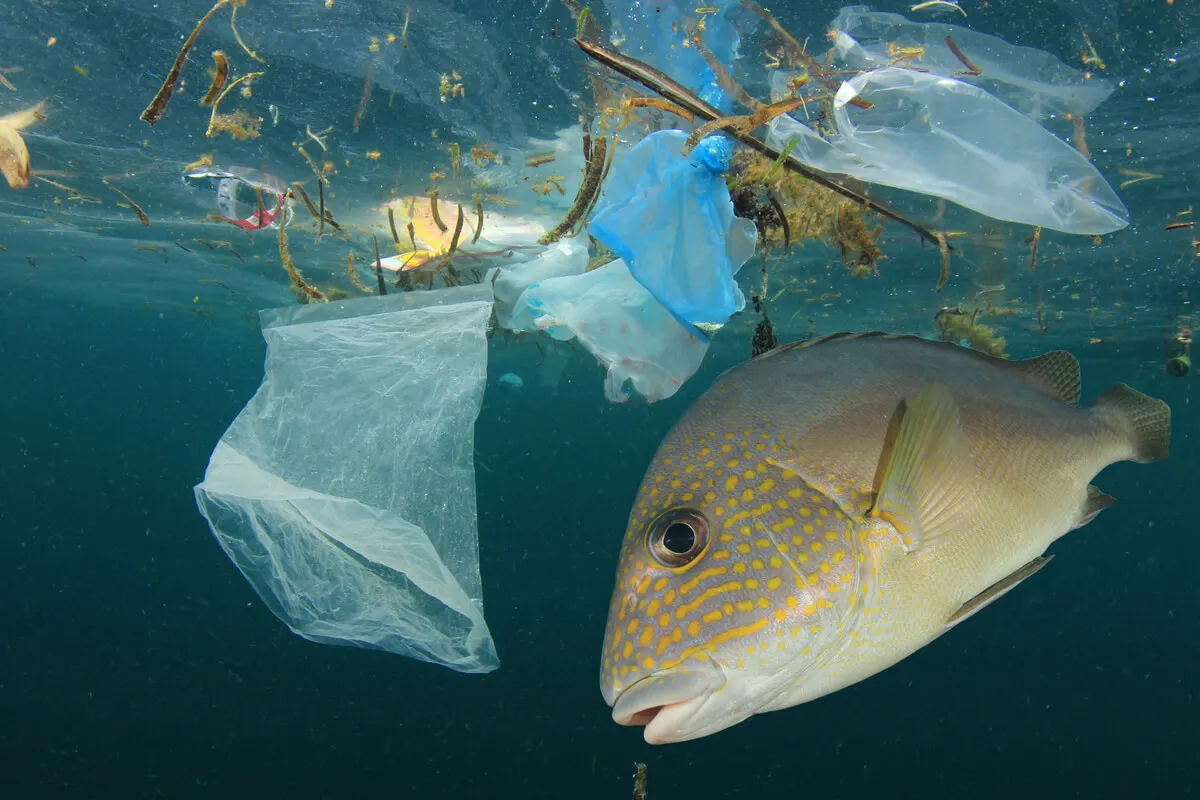Biodegradable Sunscreens: What Are They and Why are They Recommended?

The use of biodegradable sunscreens is currently recommended due to their lower impact on the environment, as well as their effect on the skin. Some of the components of traditional sunscreens are not safe for marine flora and fauna. For this reason, there are beaches in various parts of the world where they have been banned.
However, the question arises as to what these biodegradable sunscreens contain. Moreover, can they fulfill their function of protecting us from the effects of solar radiation? We’ll answer these questions below.
Types of sunscreens
There are several types of sunscreens, depending on the protection factor and the skin of the recipient, among other aspects. Additionally, a distinction must be made between physical and chemical filters:
- Physical filters (also called mineral filters) bounce the light back as if they were a mirror. These are usually composed of mineral oxides, such as titanium and zinc.
- Chemical or organic filters, on the other hand, absorb the light to prevent it from penetrating the skin, dissipating it in the form of heatwaves. In this way, they do the opposite job of mineral filters, but with the same purpose.
In addition to these criteria, a clear dividing line can be established between those sunscreens that don’t impact or harm the environment and those that contain chemical substances that, on the contrary, can be harmful.
We think you may also enjoy reading this article: 5 Natural Remedies to Protect Your Hair from the Sun
Biodegradable sunscreens
Biodegradable sunscreen is considered to be any substance that can be broken down by the action of natural elements, returning to its original state without harming the soil, water sources, flora, or fauna.
In this order of ideas, biodegradable sun creams are used to protect against the effects of radiation on health, but have the particularity that they are made with ingredients that don’t affect the environment in any way.
It’s important to note that in traditional products, in addition to the physical filter, the rest is water and other filler ingredients. However, in the case of biodegradable sunscreens, these ingredients interact with plants or marine animals without harming them.

How to recognize biodegradable sunscreens?
Biodegradable sunscreens can be found in various presentations, just like conventional ones. However, what differentiates them is their composition, with more natural substances.
In order to be considered environmentally friendly, a product must contain non-harmful ingredients. In this regard, the following should be mentioned as negative, i.e. harmful, representatives:
- Benzophenone or oxybenzone
- Butyl methoxydibenzoylmethane
- Butylcarbamate
- Hexyldecanol
- Methyl and ethylparaben
- Propylparaben
- Butylparaben
- Benzylparaben
- Dimethyl apramide
- Dimethyl dimethicone
- Octinoxate
- Octocrylene
- Triclosan
- Polyethylene
- Para-aminobenzoic acid
- 4-methylbenzylidene camphor
These are the most important components you should take into account when choosing a biodegradable sunscreen. In other words, products containing these substances should be avoided. This way, you can make sure that what you are buying does not harm the environment.
Then, it’s up to you to check the label and verify the formula. It’s a long list, but the names of such chemicals are also quite particular.
Like this article? You may also like to read: How to Treat a Sunburned Face with Natural Remedies
The advantages of biodegradable sunscreens
From the point of view of skin benefits, in terms of protection against the sun’s rays, these biodegradable products are equally effective as conventional sunscreens.
However, their biggest advantage is that they are environmentally friendly, because they don’t t include chemicals that can alter ecosystems.
Of the ingredients mentioned earlier in the list, the most well-known are parabens. Their presence has been detected in marine habitats. Among the harmful effects they cause on various organisms, research mentions hormone disruption, delayed development, and fertility. Even corals are affected by the presence of parabens in the environment.
Another common ingredient in conventional sunscreens, and one that’s considered quite harmful, is oxybenzone. Studies indicate that this substance can cause allergic reactions in humans.
Oxybenzone has also been detected in many marine ecosystems and is not considered easy to remove. According to a review carried out in 2020, it has been observed in vitro that it produces effects on coral, which could alter its ecological balance.
The impact of these filters on the environment cannot be seen with the naked eye when we go to enjoy the sea and the sun. However, there’s a cumulative effect. Just think of the fact that in Rio de Janeiro, Hawaii, Mallorca, Punta Cana, or the Mayan Riviera, there are beaches that are visited by millions of people every year.

Some disadvantages of biodegradable sunscreen
Biodegradable sunscreens also have their disadvantages. These include the fact that they’re more expensive and, on the other hand, the duration of their effect on the skin is considered to be shorter.
This is compensated by the benefits they provide for the health of the skin and for the environment by minimizing the chances of allergic reactions, as well as by reducing our polluting footprint on the earth. So, they’re still worth it.
Biodegradable products, sustainable beaches
The planet has suffered enough from the consequences of human activities. And when we ask ourselves what we can do to reverse this, we may think we have to take big actions. However, small changes count, too.
One of them can be something very simple and something we may not have thought of: using biodegradable sunscreen. This contributes to the care of the seas and oceans, their ecosystems, as well as marine flora and fauna.
Now’s the time. Let’s check product labels and refrain from buying products that contain chemicals that have a negative impact. This way, we and future generations will be able to enjoy many days at the beach.
All cited sources were thoroughly reviewed by our team to ensure their quality, reliability, currency, and validity. The bibliography of this article was considered reliable and of academic or scientific accuracy.
- Cuerva Fernández I. Análisis, presencia y efectos de los parabenos en organismos marinos. Las Palmas: Universidad de Gran Canaria, 2020.
- Rius Salvador M. Evaluación del riesgo ecotoxicológico de cinco parabenos mediante batería de bioensayos. Valencia (España): Universidad Politécnica. 2020. http://hdl.handle.net/10251/149890
- Robert L, Madridejos R, Diego L. El sol, las radiaciones y los fotoprotectores solares. BIT. 2020; 31(6): 35-41.
- Russo J, Ipiña A, Palazzolo J, et al. Dermatitis por contacto fotoalérgica a protectores solares con oxibenzona en La Plata, Argentina. Actas Dermo-Sifiliográficas. 2018; 109(6): 521-528.
This text is provided for informational purposes only and does not replace consultation with a professional. If in doubt, consult your specialist.








